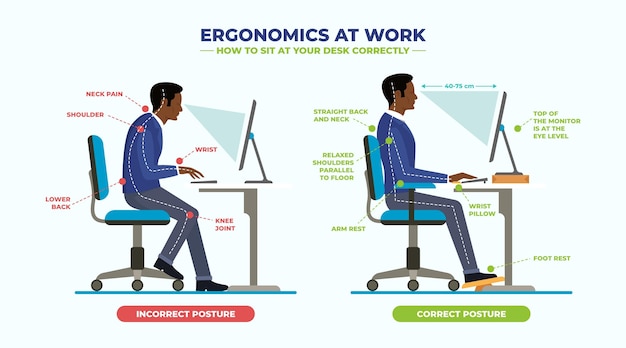The Ultimate Healthy Habits Checklist for Managing Back Pain: Weekly Goals, Tips & Safety Tips
Living with back pain doesn’t mean giving up on a healthy, active life. In fact, adopting the right daily habits can significantly reduce discomfort, improve mobility, and prevent future flare-ups. This comprehensive checklist is designed specifically for individuals managing back pain—offering practical tips, achievable weekly targets, and essential safety reminders to support long-term spinal health.
Why Healthy Habits Matter for Back Pain
Chronic back pain affects millions worldwide and is often linked to lifestyle factors such as poor posture, inactivity, improper lifting, and stress. While medical treatment is sometimes necessary, everyday habits play a crucial role in both prevention and recovery. Small, consistent changes can lead to meaningful improvements in pain levels and quality of life.
Daily Healthy Habits Checklist
Incorporate these evidence-based habits into your routine to support spinal health and reduce back strain.
- Practice Proper Posture: Whether sitting, standing, or walking, keep your spine aligned. Avoid slouching and use ergonomic chairs with lumbar support.
- Stay Active: Gentle movement helps reduce stiffness. Take short walks, stretch, or try low-impact exercises like swimming or yoga.
- Lift with Care: Bend at the knees, not the waist. Keep objects close to your body and avoid twisting while lifting.
- Take Frequent Breaks: If you sit for long periods, stand up and move every 30–60 minutes. Set a timer as a reminder.
- Hydrate Well: Water keeps spinal discs hydrated and helps maintain flexibility. Aim for 6–8 glasses daily.
- Manage Stress: Stress can increase muscle tension. Practice deep breathing, meditation, or mindfulness for 5–10 minutes a day.
- Sleep in a Spine-Friendly Position: Use a supportive mattress and pillow. Side or back sleeping with a pillow under the knees can reduce strain.

Weekly Healthy Habits Targets
Set realistic weekly goals to build consistency and track progress.
- Exercise 3–5 Times Weekly: Focus on core-strengthening and flexibility exercises like Pilates, tai chi, or gentle stretching routines.
- Stretch Daily: Dedicate 10 minutes each day to stretching your hamstrings, hips, and lower back.
- Review Your Workspace: Once a week, assess your desk setup. Ensure your monitor is at eye level and your feet rest flat on the floor.
- Practice Mindful Movement: Try one guided session of yoga or meditation focused on body awareness.
- Limit Sedentary Time: Aim to reduce sitting time by 30 minutes per day through walking breaks or standing tasks.

Safety Reminders for Back Pain Management
Safety is key when managing back pain. Avoid actions that could worsen symptoms or lead to injury.
- Listen to Your Body: Stop any activity that causes sharp or increasing pain. Discomfort is a signal to rest or modify.
- Avoid High-Impact Activities: Skip running, jumping, or heavy weightlifting if they aggravate your pain.
- Use Proper Equipment: Wear supportive footwear and use assistive tools (like a dolly) when moving heavy items.
- Warm Up Before Activity: Always start with gentle movements to prepare your muscles and joints.
- Don’t Ignore Persistent Pain: If pain lasts more than a few weeks or worsens, consult a healthcare provider.
- Avoid Prolonged Bed Rest: Extended inactivity can weaken muscles and delay recovery. Stay gently active.
Nutrition and Back Health
A balanced diet supports tissue repair and reduces inflammation. Include:
- Foods rich in omega-3 fatty acids (e.g., salmon, flaxseeds)
- Antioxidant-rich fruits and vegetables
- Calcium and vitamin D for bone strength (e.g., leafy greens, fortified foods)
- Lean proteins to support muscle health
Limit processed foods, excess sugar, and saturated fats, which may contribute to inflammation.
Final Thoughts
Managing back pain is not about quick fixes—it’s about building sustainable, healthy habits. By integrating proper posture, regular movement, stress management, and safety awareness into your daily life, you can take meaningful steps toward lasting relief and improved well-being.
Start small, stay consistent, and celebrate progress. Your back will thank you.

















